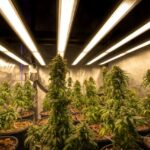The Agriculture Department announced in the Royal Gazette on Friday, October 28th that the importing…
July 26, 2023, Newark – According to new projections from The Brainy Insights, the global industrial hemp market is on a notable rise, escalating from USD 5 billion in 2022 to an estimated USD 28.47 billion by 2032. This growth is brought on by several economic, societal, and environmental factors.
The modern world faces numerous challenges from battles to climate alterations, with the burden often falling disproportionately on certain world regions. Staggering food security issues stem from unequal access to food among a rapidly growing population. Luckily, hemp presents itself as a solution. Its ability to thrive with a fraction of the resources required by other crops makes it a potent tool against food insecurity. Rich in fatty acids, vitamins, and minerals, hemp seeds can potentially fulfil an adult’s daily protein requirement, shedding light on its considerable nutritional prowess.
Beyond mitigating the food crisis, hemp has invaded a multitude of sectors, making its mark in everything from pharmaceuticals to industrial goods. With increasing reliance on eco-friendly materials, hemp has come to play a significant role in industries such as textiles, printing inks, and even solvents, proving itself a key player in advancing a more sustainable world.
High Thailand has noticed a substantial surge in the industrial hemp market following legalisation in various countries, including India, China, and Thailand. Stimulating use in industries such as textile, paper, personal care, and animal nutrition, hemp’s potential seems increasingly undeniable. Not to mention its steadily rising popularity in entrepreneurial ventures aided by favourable government initiatives and programmes.
In 2022, the most prominent market share came from the hemp seed oil sector, with return earnings at a hefty 1.85 billion. Despite being broken down into numerous categories – from hemp seeds to CBD hemp oil – hemp seed oil dominated with the most substantial revenue.
On the other hand, conventional hemp had the most substantial presence in the market with a staggering 2.85 billion in market revenue in 2022. Unlike its organic counterpart, conventional hemp takes the lead when it comes to profitability, despite environmental concerns.
In various application sectors, it seemed personal care products dominanted the scene, closing off 2022 with a market revenue of 1.35 billion. Diverse applications ranging from foods and beverages to textiles and construction further bolster the versatility and universal appeal of hemp-derived products.
Recognising the revolutionary potential of hemp, institutions such as the HudsonAlpha Institute for Biotechnology and its partner, New West Genetics, are working towards maximising the uses of this crop. With grants from bodies like the United States Department of Agriculture’s National Institute of Food and Agriculture (USDA-NIFA), the evolution of plant-based food and fibre crops is entering a new era.
Despite the shining potential, the market faces hindrances from high retail pricing and stringent restrictions in certain regions. Inaccessibility and cost issues stifle widespread adoption of hemp products, creating hurdles for the market’s expansion plans.
However, the prospects remain optimistic. As we explore more sophisticated hemp processing techniques and the much-awaited legalisation efforts in other parts of the world, the overall positive trajectory of the market stands to gain further momentum.
In the face of minor challenges presented by stringent regulations, the overall sentiment towards hemp leans positive. With major players like American Cannabis Company, Inc., Hemp Inc., and CBD Biotechnology Co. leading the charge, it’s clear that the potential for growth in the industrial hemp market is immense.
As advancements continue and innovation within the sector matures, one thing is certain – hemp plants have left an already indelible mark on the industrial world, and they’re just getting started.



